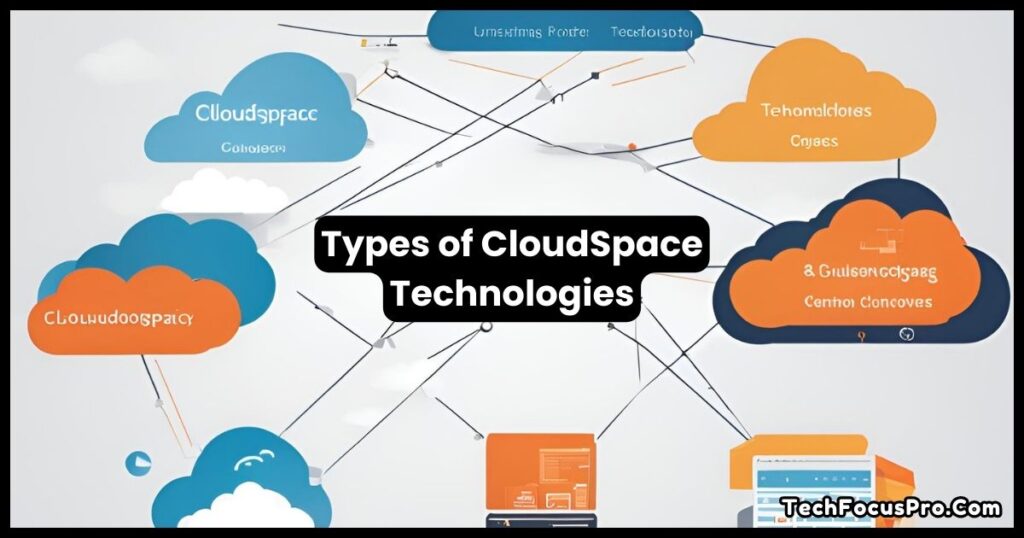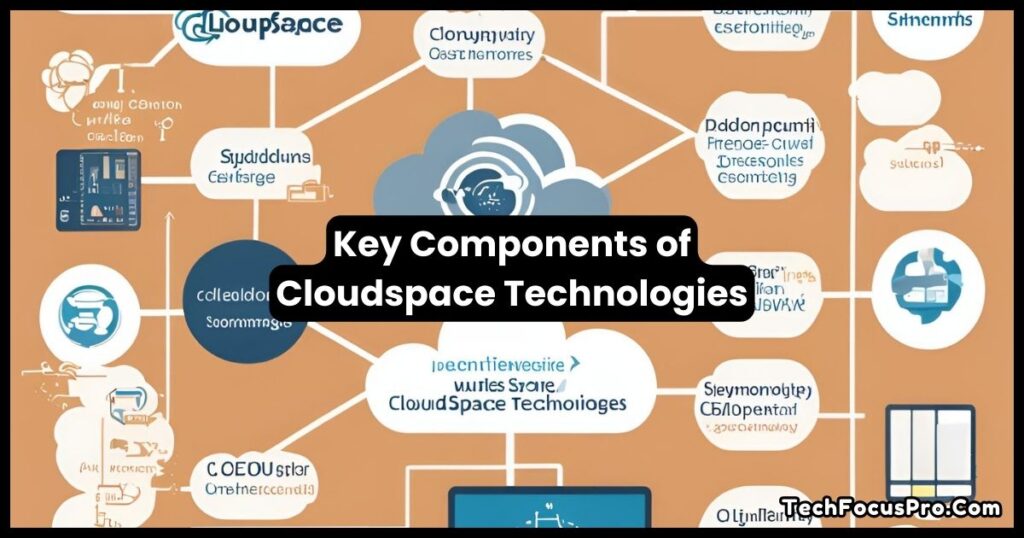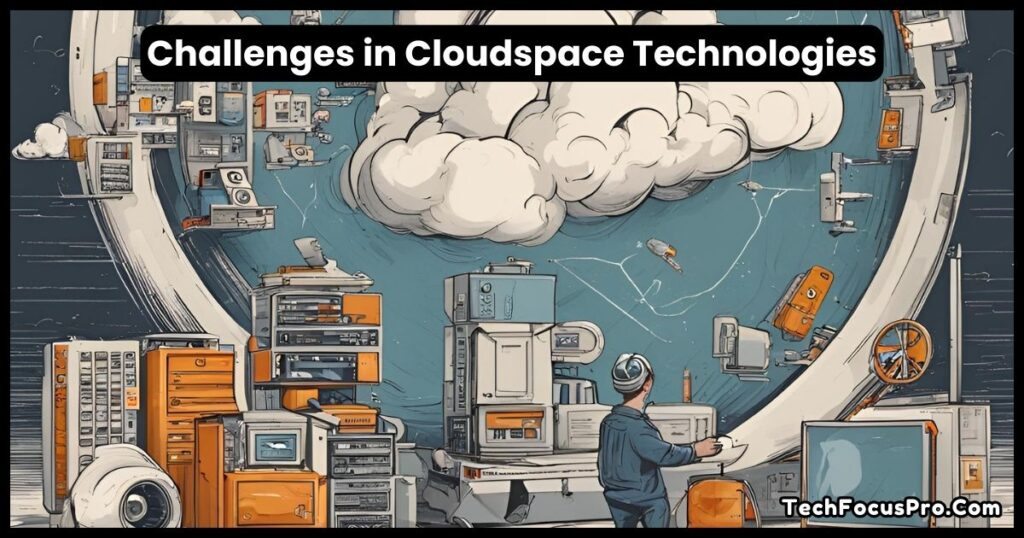Cloudspace Technologies: What are its Challenges and Future?

Cloudspace Technologies, or just “cloud technologies,” are web-based tools and services for data administration and storage. Users no longer need to store their data on a local server or desktop computer because they can now access their files and programs from any internet-connected device. This makes more adaptability and easier collaboration possible.
Importance and Role of Cloudspace Technologies in Modern Computing
Cloud computing is becoming indispensable in the modern digital environment. It saves operational costs by eliminating the need for costly machinery and maintenance. Additionally, companies may swiftly increase or decrease storage and services in response to demand because they are scalable. Thanks to cloud services, people are more productive when they can access and exchange data at any time and from any location.
Historical Development and Evolution of Cloudspace Technologies
While cloud computing has existed since the 1960s, its current form emerged in the late 1990s and early 2000s. With the development of cloud services, major corporations like Google and Amazon altered the distribution of data and software. Since then, cloud computing has quickly developed, combining machine learning and artificial intelligence to provide ever-more-advanced, useful solutions.
Types of Cloudspace Technologies

- Public Cloud
Third-party vendors offer public cloud services over the Internet. Anyone who wants to utilize or acquire these services can do so. Well-known public cloud providers include Microsoft Azure, Amazon Web Services (AWS), and Google Cloud Platform. The main characteristics of public clouds are their accessibility from any location with an internet connection, cost, and scalability. They are ideal for businesses and individuals who need flexible and on-demand resources without worrying about the headaches of maintaining actual equipment.
2. Private Cloud
Private cloud services are used exclusively by a single organization. This kind of cloud is specific to the organization and is either hosted by the company internally or by a third-party supplier. The following is a private cloud’s primary advantages:
- Enhanced security.
- Greater control over the infrastructure.customization
- Customization to meet specific business needs.
Private clouds are particularly helpful for businesses that handle sensitive data or must adhere to stringent legal regulations.
3. Hybrid Cloud
The hybrid cloud combines the best features of both public and private clouds to enable the exchange of data and apps between them. Businesses can execute tasks using hybrid clouds, which keep sensitive data in a private cloud and leverage the speed and capacity of the public cloud for non-sensitive operations. This approach provides flexibility, cost-effectiveness, and the ability to split load across multiple environments. Hybrid clouds are an option for companies who want to make the most of their current infrastructure while taking advantage of the capabilities and scalability of the public cloud.
Key Components of Cloudspace Technologies

Infrastructure as a Service (IaaS)
Infrastructure as a Service (IaaS) virtualizes and makes available computer resources via the Internet. Organizations can avoid purchasing and maintaining physical servers by renting these resources from a cloud operator. These resources include networking capability, storage, and virtual machines.
Overview:
IaaS is popular because it offers flexibility, scalability, and cost-efficiency. Businesses can increase or decrease their computing resources based on their needs and only pay for what they use.
Major Providers:
- Amazon Web Services (AWS): Known for its broad range of services and global reach.
- Microsoft Azure: Offers strong integration with Windows applications and services.
- Google Cloud Platform (GCP): Known for its innovative technology and data analytics capabilities.
- Platform as a Service (PaaS)
Platform as a Service (PaaS) provides a platform allowing customers to develop, run, and manage applications without dealing with the underlying infrastructure. It includes operating systems, databases, and development tools.
Benefits:
- Ease of Use: Developers can focus on writing code and deploying applications without worrying about hardware or software maintenance.
- Speed: Quick setup and deployment of applications.
- Scalability: Easily scale applications based on demand.
Typical Use Cases:
- Application Development: Quickly build and deploy web and mobile apps.
- Database Management: Use built-in database services without setting up physical servers.
- Testing and Deployment: Easily test and deploy new application features.
- Software as a Service (SaaS)
Software as a Service (SaaS) delivers software applications over the Internet on a subscription basis. Users can access these applications through a web browser without needing to install or maintain them.
Common Applications:
- Email Services: Gmail, Outlook.
- Customer Relationship Management (CRM): Salesforce, HubSpot.
- Project Management Tools: Trello, Asana.
Advantages:
- Accessibility: Access software from anywhere with an internet connection.
- Automatic Updates: Receive the latest features and security patches without manual intervention.
- Cost-Effective: Pay-as-you-go pricing models reduce upfront costs.
Challenges in Cloudspace Technologies

Data Privacy Concerns
Ensuring user data privacy is one of the biggest challenges in cloud computing. Data stored in the cloud is housed in data centers owned and operated by third-party providers. Users must trust that these providers will keep their data secure and prevent unauthorized access. There is always a risk that sensitive information could be exposed through breaches or hacking incidents. To address these concerns, cloud providers implement robust security measures, such as encryption and access controls, and comply with data protection regulations like GDPR. However, it is also important for businesses to take precautions, such as choosing reputable providers and configuring security settings correctly.
Downtime and Reliability
Another challenge is ensuring service availability and reliability. Despite their best efforts, cloud providers can experience outages that disrupt access to services and data. Such downtime can have serious consequences, from financial losses to damage to a company’s reputation. To mitigate this risk, cloud services, like multiple data centers and backup systems, are designed with redundancies to ensure continuity during disruptions. Nevertheless, businesses should also have disaster recovery and business continuity plans to handle unexpected downtimes.
Integration with Existing Systems
Integrating cloud solutions with existing systems can take time and effort. Many businesses use legacy systems that are not designed to work with modern cloud technologies. Moving to the cloud often requires reconfiguring or redesigning these legacy systems, which can be time-consuming and costly. Ensuring that the new cloud solutions can communicate effectively with on-premises infrastructure is critical to maintaining workflow and productivity. To tackle these challenges, businesses can employ hybrid cloud approaches, use middleware to connect different systems, and invest in training their IT staff to handle the transition smoothly.
Future of Cloudspace Technologies

Emerging Trends
Cloud space technologies are expected to bring about several noteworthy developments that completely transform the market. Here are a few significant new trends:
Cutting-Edge Computing
Processing data near its source instead of in a centralized data center is known as edge computing. This method’s reduced latency and bandwidth make real-time data analysis and decision-making possible. For example, sensors in autonomous cars require immediate data processing to make snap decisions. Edge computing ensures that important data is handled quickly and effectively.
Architectures without servers
Thanks to serverless computing, developers can run code without provisioning or maintaining servers. Instead, the cloud provider allots resources automatically based on demand. Customers only pay for the computer time they use, so this arrangement helps firms save money. With serverless architecture, developers can concentrate on creating code instead of managing infrastructure, streamlining the development process.
Both machine learning and artificial intelligence
Cloud companies increasingly offer artificial intelligence (AI) and machine learning (ML) services. These technologies help businesses improve customer experiences, automate time-consuming operations, and use data to draw insightful conclusions. For instance, chatbots with AI capabilities can enhance customer service, and machine learning models can be used to forecast client behavior.
Predicting Future Technological Advancements and Challenges
Cloud space technologies have a promising future, but enterprises must overcome some obstacles.
Technological Progress
It is predicted that quantum computing will offer massive processing power and be able to resolve problems that traditional computers are currently unable to handle. Cloud companies have already begun testing services utilizing quantum computing.
- Enhanced Security and Privacy: As cyber threats change, cloud providers will create increasingly sophisticated security processes to safeguard sensitive data. This covers developments in data privacy laws, authentication, and encryption.
- Integration of IoT: Internet of Things (IoT) capabilities will be progressively integrated into cloud solutions, allowing businesses to manage and connect a larger variety of devices easily. This will lead to smarter cities, more advanced industrial uses, and better healthcare systems.
Obstacles
- Data Security and Privacy: Maintaining privacy and data security is still a top priority. Cloud services must regularly update and strengthen their security protocols due to the growing sophistication of data breaches.
- Regulatory Compliance: Jurisdictions have different laws regulating data storage and privacy. As regulations change, navigating these complications can become more difficult.
- Integration with Legacy Systems: Many companies continue to use outdated software, making it challenging to combine it with contemporary cloud computing services. Preserving performance and efficiency while ensuring a smooth integration will be essential.
- Cost Management: Although cloud solutions can be economical, controlling and optimizing cloud expenses will continue to be difficult, particularly for companies whose workloads are subject to fluctuations.
In summary, cloud space technologies have an exciting and difficult future. Businesses must change to fully take advantage of these improvements when new trends arise, such as serverless architecture and edge computing. They must also be ready to take on continuous challenges, including legacy system integration, data security, and regulatory compliance.
Conclusion
The tech industry’s constant pursuit of innovation is reflected in the development of cloud space technology. Businesses can discover new growth prospects, efficiency, and agility by moving their operations to the cloud. Future-proofing requires cloud adoption since emerging trends like serverless architectures and edge computing amplify these advantages. But problems like security, integration, and regulatory compliance demand constant strategic planning and funding. Despite these obstacles, cloud space technologies, which offer a robust foundation for innovation, are essential to digital transformation. Companies using these technologies will be better positioned to prosper in the rapidly changing digital market.






